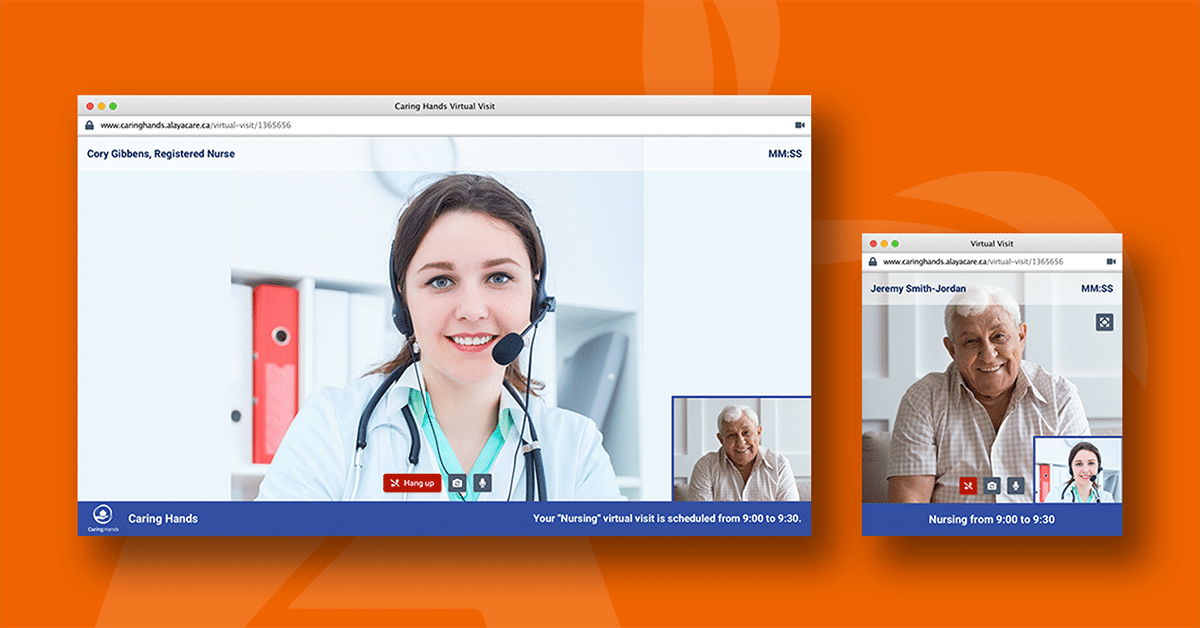Blog
Top 10 Learnings For Home Care Agencies from COVID-19

First, to be clear: we’re all going to be learning about COVID-19’s impact on our industry for a very long time to come. Still, themes are emerging as we move from the acute to the chronic phase of this pandemic.
Here is what we are seeing, hearing about, and talking about (in a recent webinar):
- Surging demand for home care: Despite the initial drop, we’re now seeing a resurgence of The reasons are many. One: the serious outbreaks at long-term care facilities are prompting family members to move their loved ones out and into home-based settings. Two: many folks are encountering difficult economic times, and home care is an economic solution. Three: many adult children who may have provided care for loved ones during shelter-in-place orders must get back to work.
- Hiring trends are in flux: There has been a shortage of home care workers for many years now, creating fierce competition for talent. But in some cases, scarcity has now morphed into With 26 million Americans alone out of work, Hireology reports a three-fold increase in applicants for open roles. Meanwhile, some regions still report worker shortages, especially in hard-hit areas. But with the demand increasing for home care services, this abundant talent pool is likely to dry up as agencies fill their ranks to cover their client needs.
- PPE is an ongoing concern: Staff safety and adequate PPE remains one of the top concerns among home care agencies today. In fact, according to results from a survey conducted by Home Care Pulse, along with widespread mask shortages, the majority of agencies report a glove shortage as well. Some describe this as an “all out war” to find PPE, with supplies ordinarily bound for home care agencies diverted to hospitals.
- There’s still fear and uncertainty: Some agencies tell us that clients are refusing to let anyone into their homes, though this too is trending down as the curve begins to flatten in many areas. With PPE still hard to come by, some caregivers are refusing to take shifts. That said, agencies are relaying heartwarming stories of care workers stepping up more than ever before, despite family demands in their own lives.
- Reimbursement rates remain a question mark: As care models change, questions remain around how various payer sources will evolve in different jurisdictions. In Ontario, for example, there’s now a $4/hour supplement in place directly added to the payroll for frontline care workers.
- Communication is more important than ever: Streamlined, efficient and clear communication between office staff and caregivers is more critical than ever when face-to-face meetings are virtually non-existent. Just as “Zoom” entered every other conversation in the past two months, agencies are exploring digital tools that deliver new efficiencies and impact care for the long term. (Side note: AlayaCare is the only home care software provider to embed video conferencing in its platform.)
- A COVID world order: What will the emergence and spread of COVID-19 mean for agencies and their clients and caregivers? When widespread testing is available, how will those be administered to clients and staff? If antibody testing is a reality, will there be a priority placed on caregivers with immunity to the virus? Will agencies be forced to admit clients who are COVID-positive? Department of Labor guidelines will evolve, but we wait now for the coming implications of what will be a cure-less pandemic for some time.
- A population becomes tech-savvy: From teaching seniors how to use video conferencing to bringing cloud-based solutions online, we are witnessing a major acceleration in the adoption of technology. Home Care Pulse survey numbers show that seven out of 10 home care agencies are conducting virtual activities, from training and scheduling to billing, client care, and more. Picture this industry in even just two years: an orchestrated mix of remote monitoring, in-person and virtual care. COVID-19 has made us hurry up.
- Virtual care is here to stay: For us at AlayaCare, it feels like we’ve done 10 years of work in 10 days. We saw the writing on the wall right away and focused on recalibrating virtual care tools and implementing ease-of-use advancements to ensure that documentation and tracking can be as accurate and efficient online as it is in-person. Family portals (here is ours) offer new ways to engage clients with their circle of care, and their popularity is booming. For more information on virtual care, see our guide here.
- Uncertainly begets opportunity: COVID-19 has created an opportunity to educate people on the long-term benefits of home care. This industry has been front and centre as the curve is flattened. Home care is shelter in place. It reduces the burden on acute care centres and its value has been profoundly demonstrated since March 2020. Europe was ahead of the curve on recognizing this, and North America has some catching up to do.






